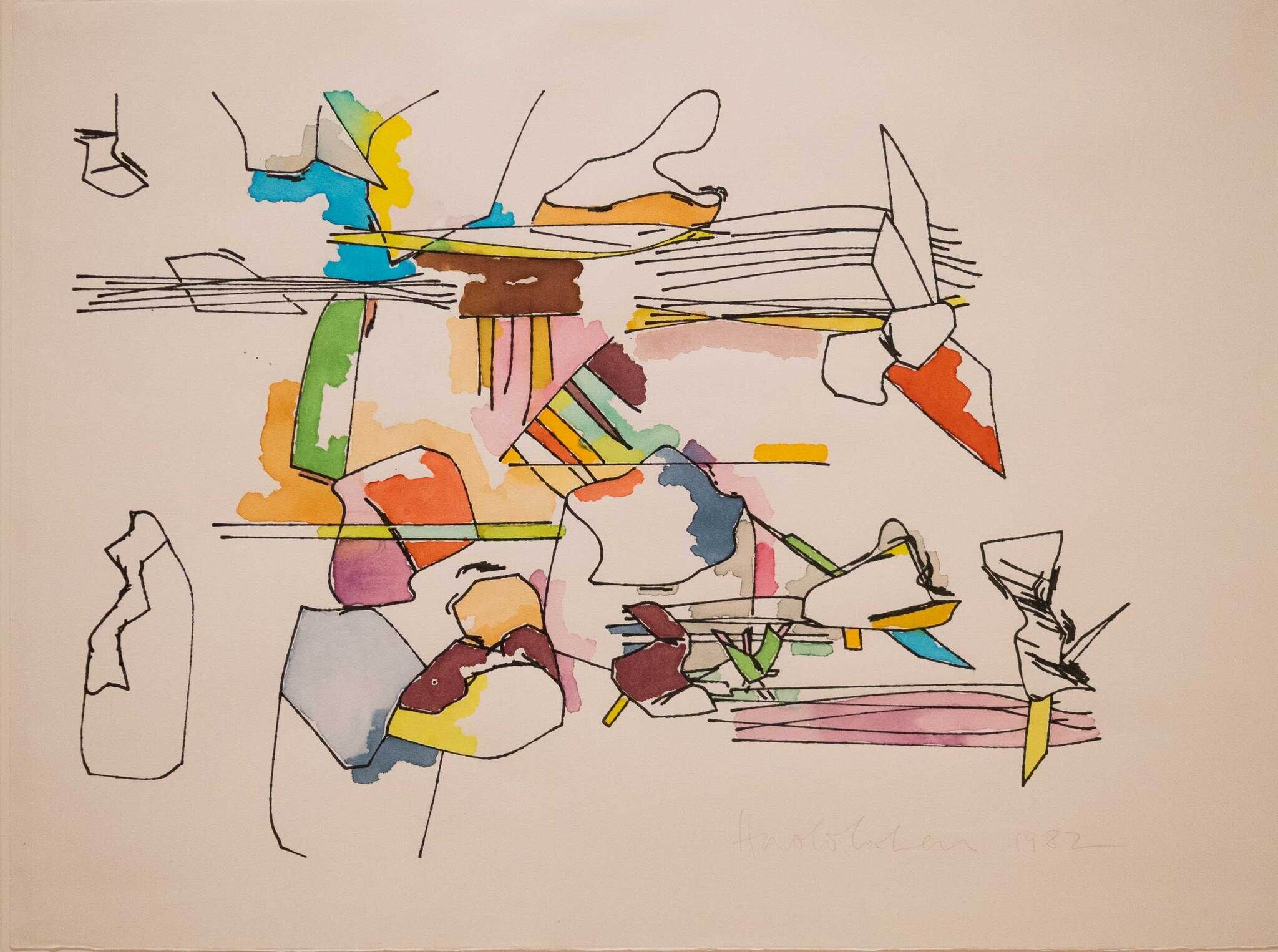Harold Cohen: AARON | Art & Artists
Feb 3–May 19, 2024
Harold Cohen: AARON | Art & Artists
AARON’s Beginnings
1
After conceiving AARON at the University of California, San Diego, in the late 1960s, Harold Cohen took the program to new levels at Stanford University’s Artificial Intelligence Lab from 1973 to 1975. From the start, AARON was intended to be a program about artmaking and the nature of representation itself; it functions as a symbol manipulator. AARON combines formal rules—such as starting in the foreground of a drawing and moving to the background—with random events to generate elements like curved lines, straight lines, or closed figures. These emerging shapes are advanced further based on feedback inside the system that evaluates the “success” of a composition. Cohen seeded AARON’s code with understanding of external objects in the world (such as their size, shape, and position), which remains accessible in its long-term memory as needed. He also encoded knowledge about the internal, procedural paradigm of an artist’s drawing strategies. When creating a drawing, AARON thus would strive to satisfy certain criteria: distributing small and large items—some close together, others farther apart—with more or less detail to achieve a sense of dimension.
AARON evolved in several phases. It began with simple, evocative shapes that grew more complex to achieve a rudimentary sense of perspective. Cohen was inspired by the drawing process of children, who start by simply linking shapes and squiggles and move on to outlining connected forms. He also was influenced by a 1973 visit to the petroglyphs of Chalfant Valley, California, which he saw as demonstrating how a system of marks begins to function as an image.

